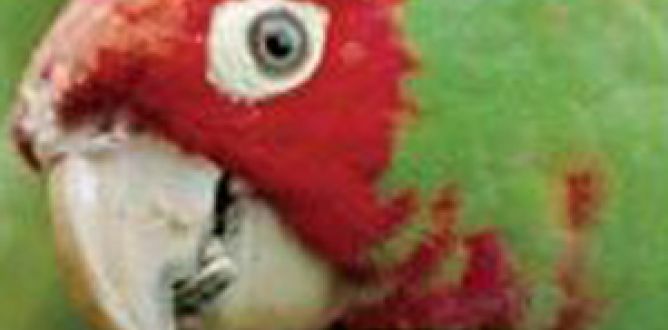The Wild Parrots of Telegraph Hill Parent Guide
Parent Movie Review
Twenty-six years ago, Mark Bittner drifted into San Francisco just as the hippie era faded to a close. Originally a native of Washington State, the aspiring poet/singer/songwriter hoped to break into the music industry. Those dreams never materialized. Instead, he became content eking out an existence doing odd jobs, feeding on the generosity of cafe vendors, and looking for rent-free shelter (on roof tops or warehouses). Sometime during the late 1980s, his life on the streets brought him in contact with The Wild Parrots of Telegraph Hill.
Equally displaced, the beautiful green and red, Cherry-headed Conures (also known as Red-masked Parakeets), believed to be escaped or abandoned pets, have made a home for themselves along the city’s north waterfront. Indigenous to Ecuador and Peru, the birds have survived by forming a flock with others from their species, adapting their diet to the local pickings (including fruit growing on backyard trees and kind donations found in birdfeeders), and building nests in available palm trees.
Taking up residence in a small cottage perched on the side of Telegraph Hill (owned by a landlord who never exacted payment, of course), Mark began offering sunflower seeds to the colorful tree dwellers. Although it took about a year, he eventually coaxed the nervous creatures to eat from his hand. His patient efforts gave him plenty of time to observe the Conures, which he also named.
As the documentary unfolds, Mark’s narrative introduces the viewer to the likes of Picasso and Sophie (a snuggling couple that define the phrase “love birds”), Mingus (a social animal who prefers the company of people to his feathered friends), and Conner (a Blue-crowned Conure who’s a loner and misfit because of his different breed). Thanks to the photography of Judy Irving, the producer /director/cinematographer/editor, the audience is able to see the remarkable parrots through the eyes of their loving benefactor.
A reminder these birds are wild, despite their urban environment, comes when a Red-tipped Hawk circles Mark’s favorite feeding spot. Encounters with these predators sometimes result in sad endings, as do a few of the other stories that are told. However, parents need not worry about watching this film with their children. These tales, along with pecking disputes and nursing the sick or wounded, are described with tenderness and optimism by a man who knows life can be hard but is still capable of bringing joy and wonderment.
Much of that joy is shared throughout this production, as Mark realizes he may have accidentally stumbled upon the meaning and purpose of his life—answers he has spent a long time seeking. While not everyone will agree with his philosophical musings, it’s hard to argue against his belief in the right of every living thing to discover its place and reason for being. Watching Mark’s evolution brings hope the transplanted parrots will be similarly successful in claiming a niche on foreign soil.
Theatrical release February 10, 2005. Updated February 13, 2012The Wild Parrots of Telegraph Hill Parents' Guide
What parallels exist between Mark and the flock of parrots he befriends? How are these used to build the story in the movie?
Judy Irving, the producer/director, is introduced to the audience during the film. This is unusual for a documentary, where the traditional format dictates the behind-the-camera crew should never cross that line. Why do you think she made this creative decision? Does it add or distract from the final product?
Home Video
The most recent home video release of The Wild Parrots of Telegraph Hill movie is December 25, 2005. Here are some details…
The tale of the birdman and his parrots takes flight on DVD, with the following bonus featurettes: Origins of the Flock, Urban Legends, Update on Mingus at the Oasis, Parrots Music Video, Mark Bittner’s Home Movies, and Flock Updates. Also included are deleted scenes, the theatrical trailer and a bonus short titled California Quail. Audio tracks are available in English (Dolby Digital 5.1).
Related home video titles:
The amazing life of birds is followed in another documentary titled, Winged Migration. The plight of a featherless variety is the focus of the film, March of the Penguins. If you would like to know more about Mark Bittner and his flock of feather friends, look for his book, The Wild Parrots of Telegraph Hill—A Love Story.

